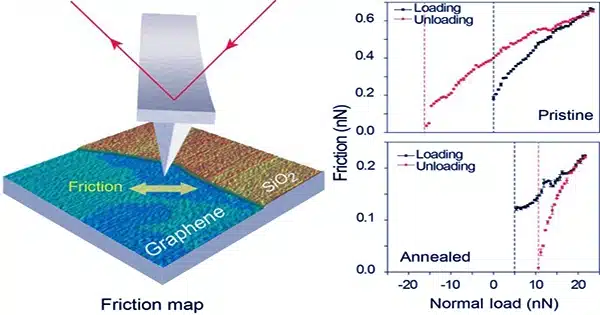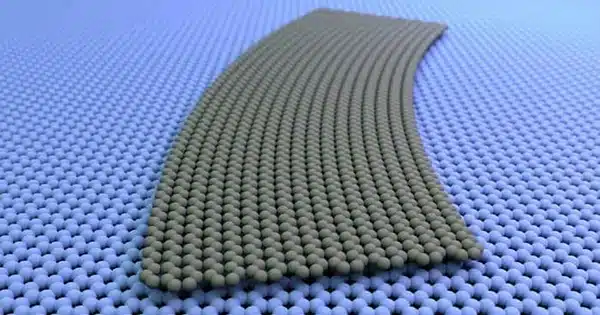According to researchers at the University of Illinois Urbana-Champaign led by Professor Rosa Espinosa-Marzal of the Department of Civil and Environmental Engineering, the friction on a graphene surface may be dynamically controlled using external electric fields. The research is described in detail in the study “Dynamically tuning friction at the graphene interface using the field effect,” which will be published in the journal Nature Communications on September 19, 2023.
Friction is important in both natural and manmade systems, regulating the behavior of sliding contacts, influencing material wear, and influencing fluid movement across surfaces, among other consequences. Friction can be passively regulated by selecting design components such as material and roughness.
However, as micro- and nanoscale devices grow increasingly widespread, a more recent tendency has been to examine systems whose frictional response may be dynamically modified in situ. External electric fields, which can change the properties of lubricants and material surfaces as well as their interactions, are one of the most promising approaches to friction management.

“Novel approaches to the design of interacting surfaces are necessary to move past the state of the art,” the investigators write, “and 2D materials are a new and excellent choice based on their high mechanical strength and chemical and thermal stability.”
Graphene is a 2D version of carbon that is sometimes referred to as a “wonder material” due to its exceptional qualities. Surfaces covered in graphene films have very low friction in general, but the latest findings show that friction on graphene-coated surfaces can be “turned on” by exposing the surface to an electric field under the right conditions. The system can then be managed in this greater friction condition before switching back to lower friction, all while avoiding the use of massive electrical biases between the surfaces in contact.
“The work will be impactful in reducing energy consumption in nano- and micro-electromechanical systems, in addition to allowing dynamic control of friction while mitigating the enhanced wear and corrosion of sliding surfaces when direct bias is applied,” Espinosa-Marzal said.
















